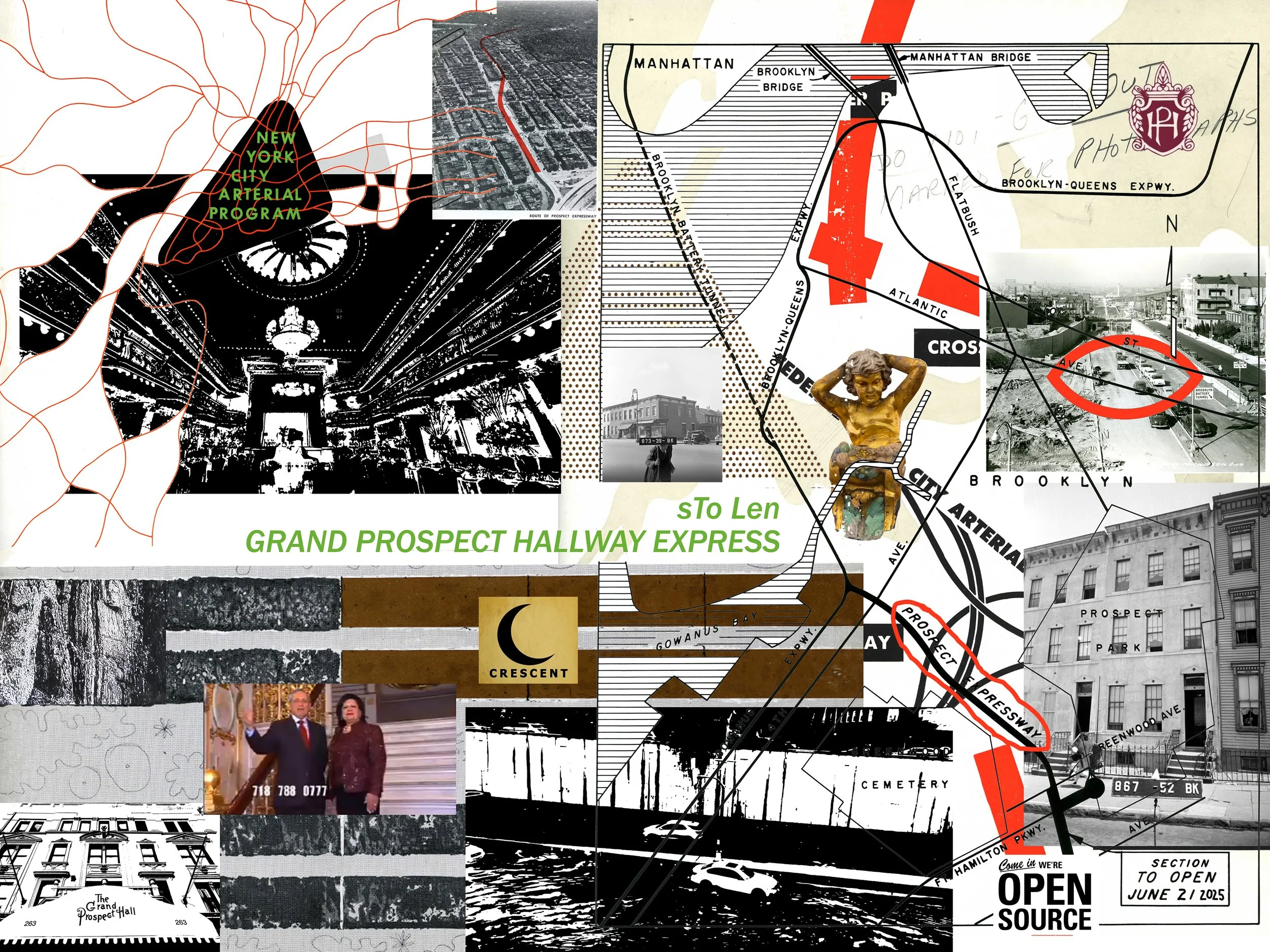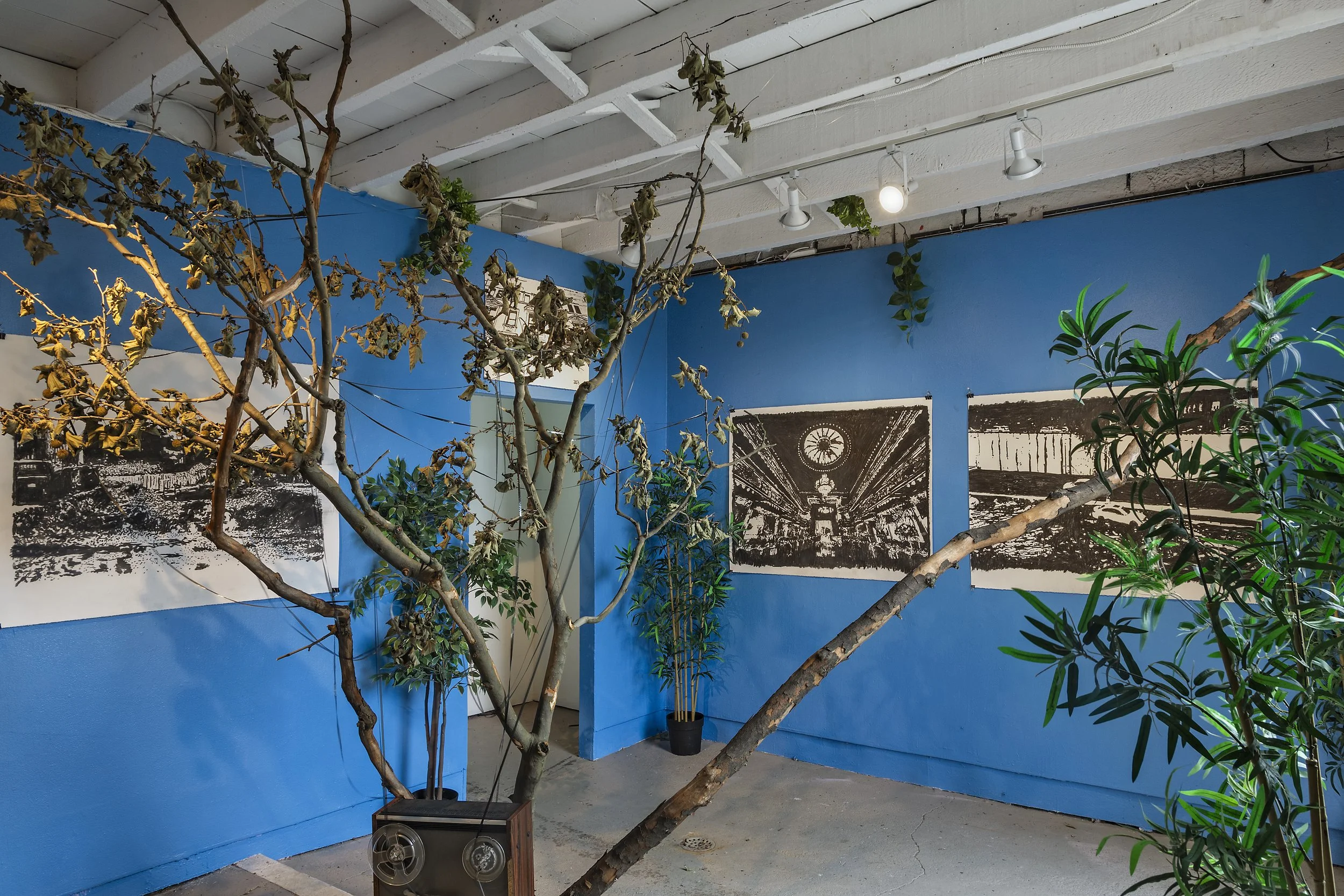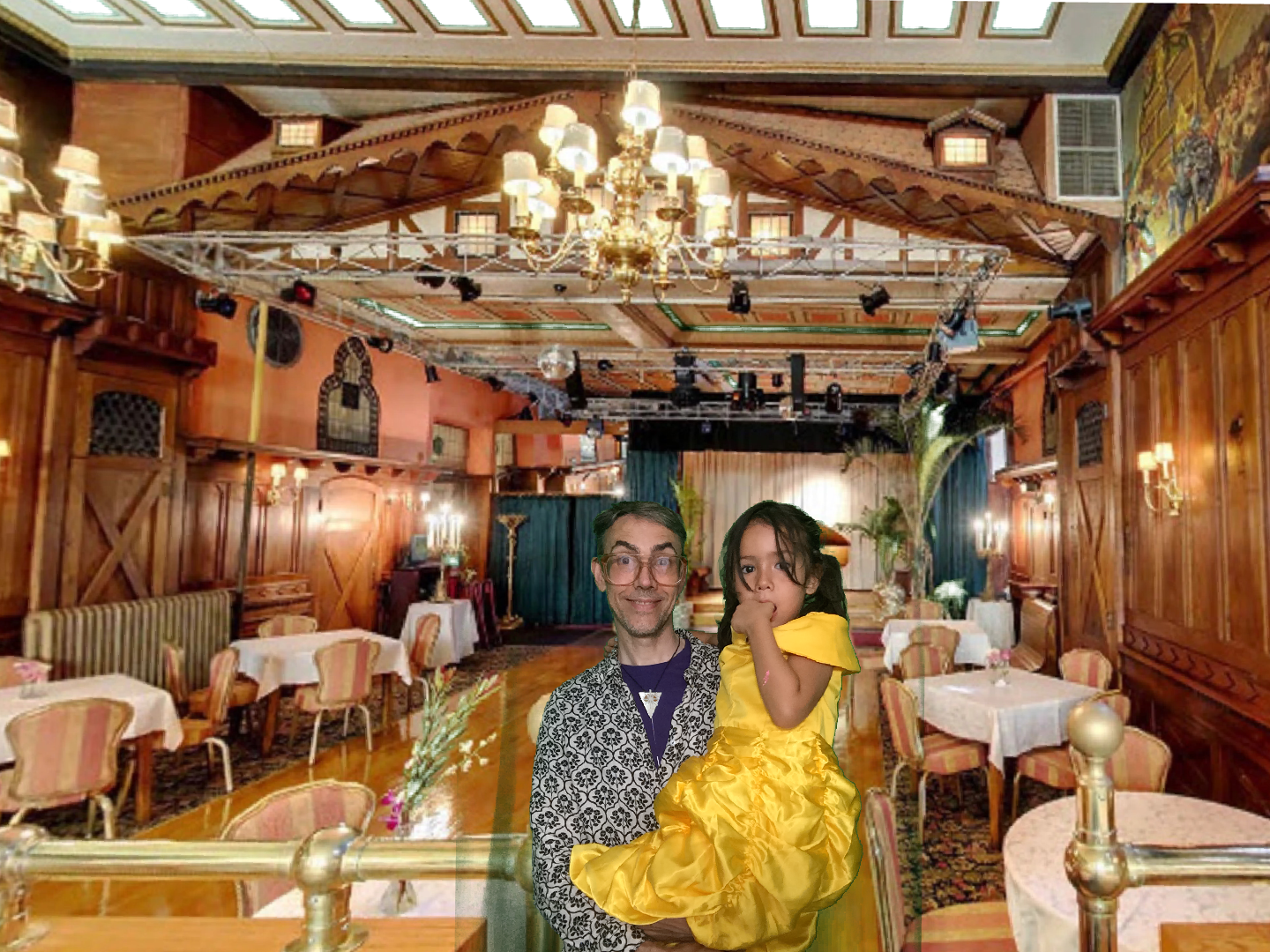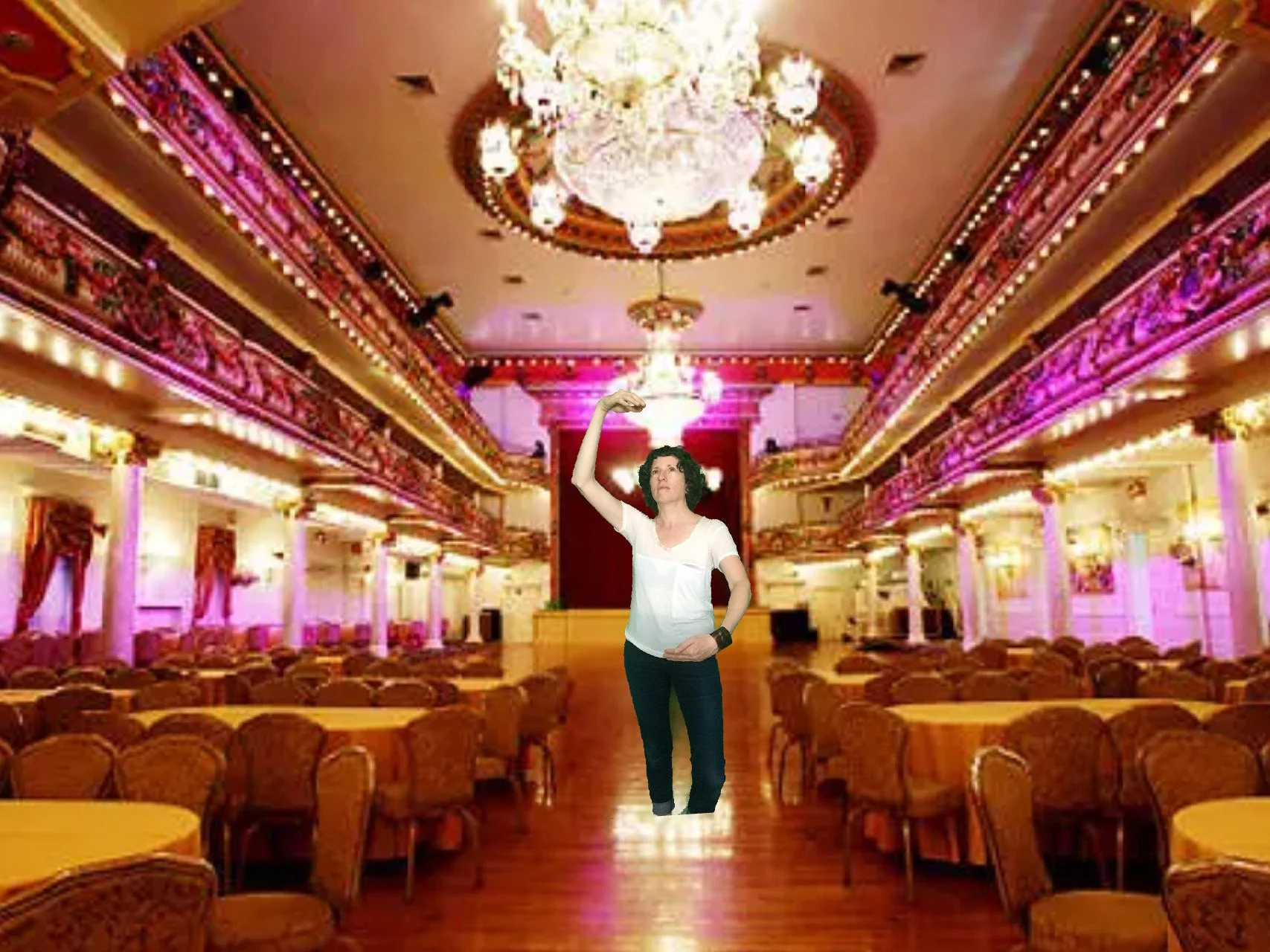June 21 - July 27, 2025
Opening Reception: June 28, 7-9pm
Gallery Hours: Thurs + Fri: 4-6pm, Sat + Sun: 2-6pm
Open Source Gallery is pleased to present The Grand Prospect Hallway Express, a project by sTo Len.
What if the Prospect Expressway morphed with the razed Grand Prospect Hall and replaced its high speed traffic with a relaxing site for community inside of a thriving Rococo-inspired Park Slope pocket park? The Grand Prospect Hallway Express is a conceptual splicing of the DNA from demolished spaces in the Park Slope neighborhood of Brooklyn with the Prospect Expressway that runs right through it. Lingering ghosts of the Grand Prospect Hall’s storied history live among the spirits of the thousands of households displaced during the making of the highway. Gone is the noise pollution of yesterday, replaced with the soothing sounds of nature reclaiming outdated infrastructure and a reel to reel tape machine that plays tape loops mixing snippets from the Prospect Hall’s musical history and the drone of the expressway. Visitors can preserve the past while deciding what lies ahead for this roadway by participating in an oral history and Green Screen photo booth that will get incorporated into the exhibition over time.
Just back from an art residency at the Grand Canyon, multi-disciplinary artist sTo Len will bring his nomadic research project, Office of In Visibility, to Open Source and focus on a very different kind of canyon: the Prospect Expressway. Taking inspiration from the way we experience awe in nature while using junkyard materials from Koko Lot, Len will explore how we can reimagine a grey urban landscape into a place of wonder that similarly incites care and celebrates a neighborhood’s history.
“Throughout the exhibition, I had the pleasure of meeting many locals who have lived in the area for generations and remember what is was like before there the Expressway divided the neighborhood. I heard stories about the Grand Prospect Hall, the weddings, birthday parties, proms, and Barmitzvahs that people attended when it was open. People shared with me their family photos of houses that were demolished, some of which I made drawings from, and videos of festive crowds dancing at the Hall that I played on a stack of old TVs alongside slowed down video surveillance-style footage of traffic on the expressway with the occasional flood of water. On walks along the highway, I collected sticks from under trees and created charcoal with them that I then used to draw with. I created drawings from my own photos of the expressway, overpass walkways, and the vines that intertwine with the fences that line the street. I also used archival material from the MTA of the construction of the expressway as inspiration for drawings as well as other older photos I found of the Grand Prospect Hall and its wild interior. Some of these photos were then used in a Green Screen photo booth where visitors could take their photo inside the Hall or on the expressway throughout time. On the outside of the gallery I wheatpasted images from this research, an open invitation to passersby to engage with their own stories.The show itself was a prompt for the neighborhood and it successfully brought many to gather and share their memories of this area at a time when things are changing and places are being erased. As the construction of a new condominium (overtop the recently demolished Grand Prospect Hall) loomed in the background of the gallery across the expressway, my installation proved to be a fitting space to mourn, dream, and remember together.” - sTo Len, Summer 2025








































